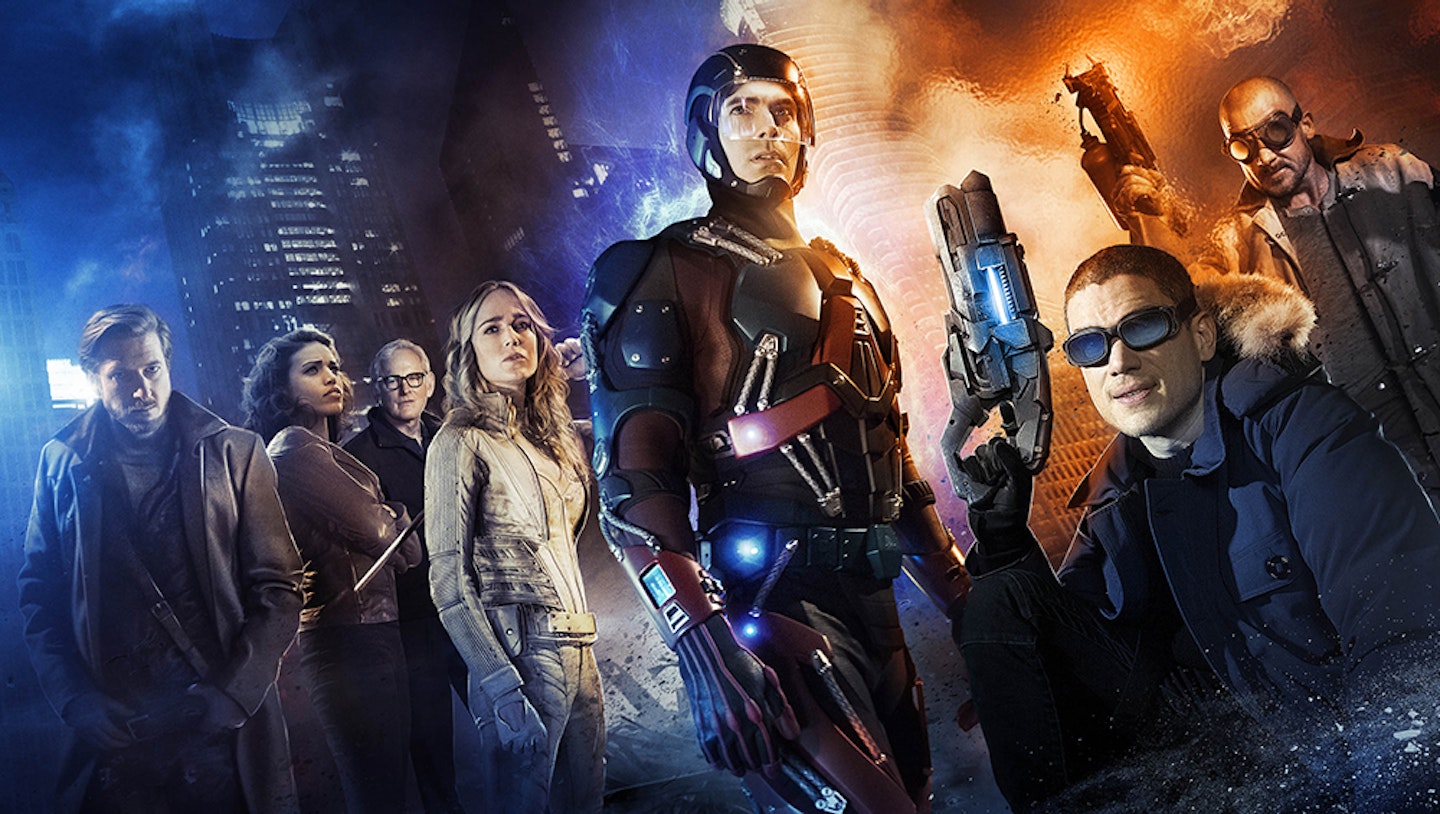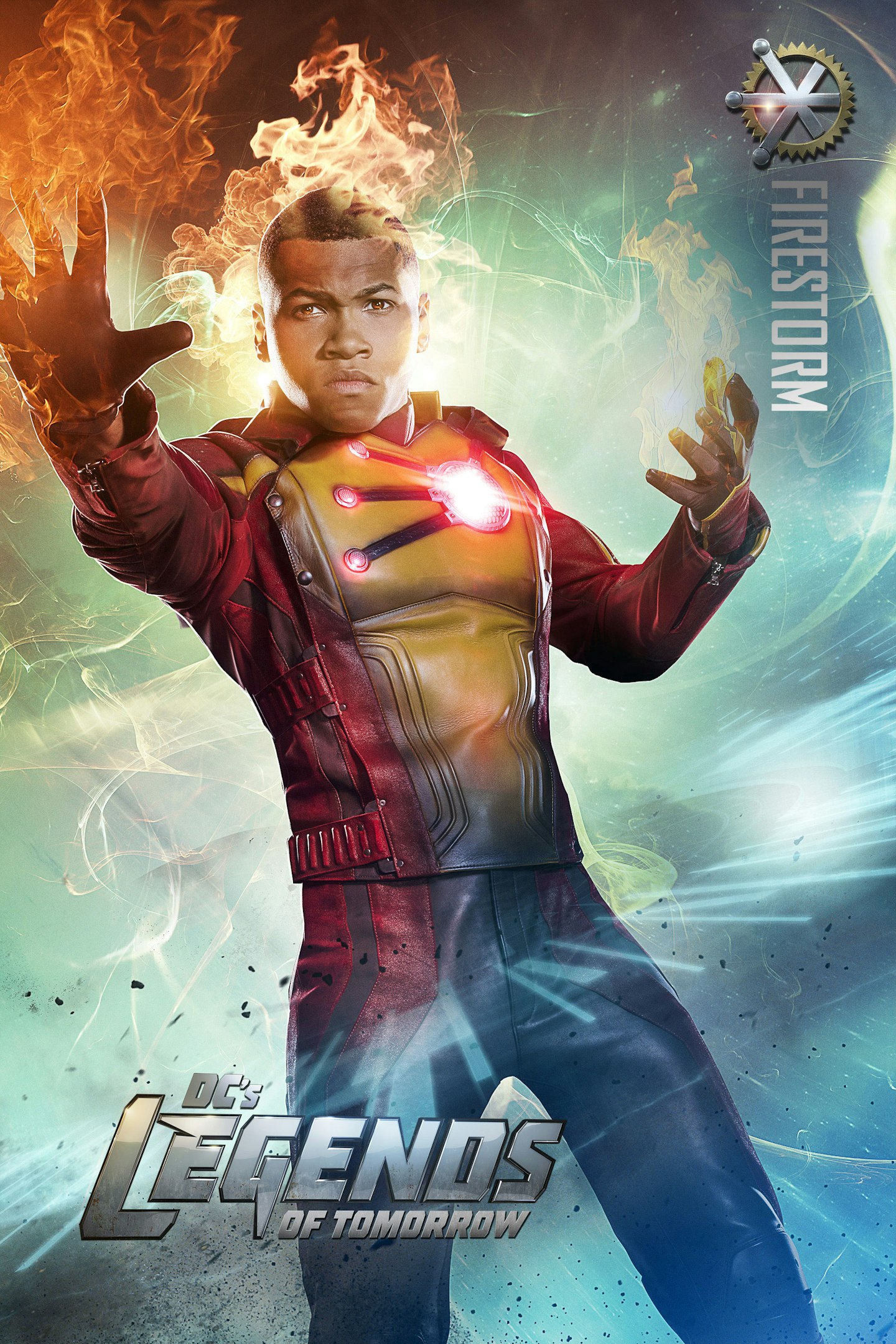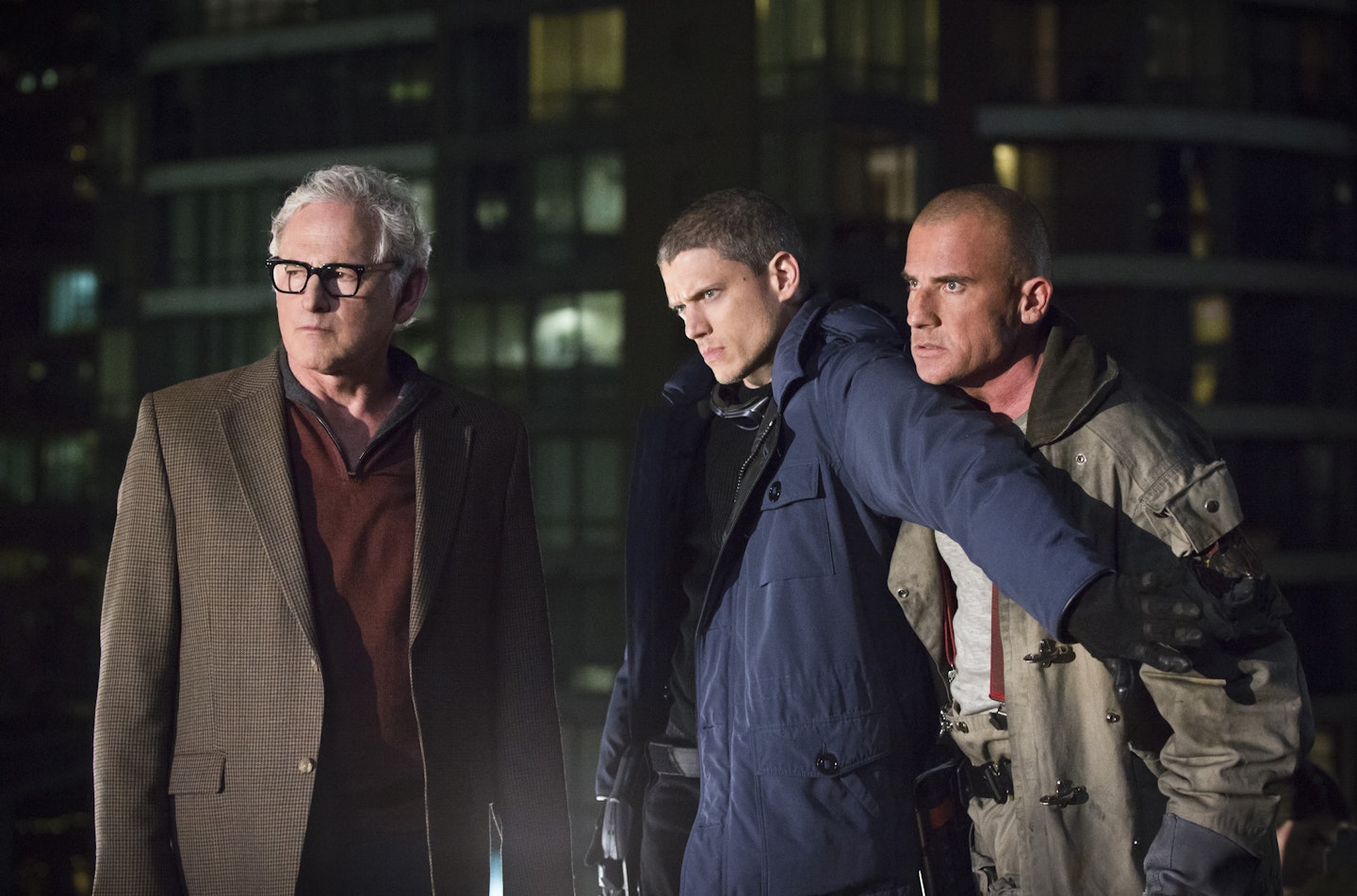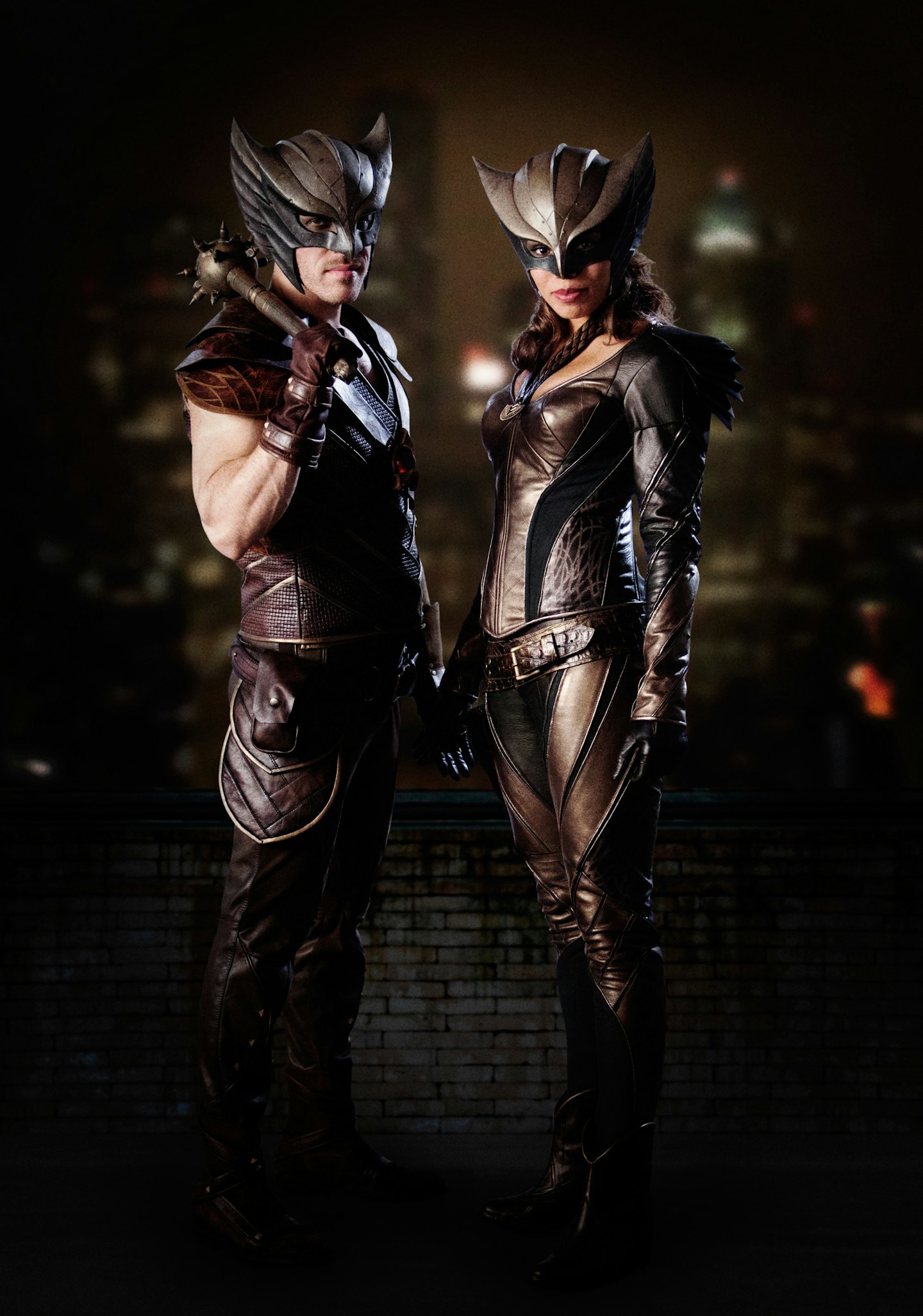A spin-off from Arrow and The Flash, DC's Legends Of Tomorrow features a who’s who of those shows’ heroes and villains coming together. Even in these superhero-rich times, it's densely populated in spandex-clad demi-gods, but good luck convincing the people behind it, many of whom also happen to be the producers of those two CW shows, as well as Supergirl, that the superhero genre is reaching saturation point.

“Pop culture is old enough that it doesn’t take a brain surgeon to realise that every genre has its moment,” counters executive producer/co-creator Marc Guggenheim. “A few years ago, procedurals were all the rage. When I was writing for Law & Order, every network had a gajillion procedurals. Back in the ‘80s, every network had their prime-time soaps. Right now, superheroes are having a wonderful moment, but no student of pop culture is going to tell you that that moment is going to last forever."
According to Guggenheim, the decline of the superhero, if it comes, will be caused by a shift in the zeitgeist rather than a glut of supply or "because the golden goose got killed". "The main thing is making sure that all of these shows are as high quality as possible," he stresses. "The assumption behind the statement is that the audience will just stop watching all of them at once, because they got overwhelmed, and we all know from the history of the medium that that doesn’t matter.”
The lineup of Legends Of Tomorrow includes former Superman Brandon Routh as Ray Palmer/The Atom, Wentworth Miller as Captain Cold, Caity Lotz as White (formerly Black) Canary, Ciara Renée as Hawkgirl, Falk Hentschel as Hawkman, Victor Garber and Franz Drameh, who come together to form Firestorm, and Dominic Purcell as Heat Wave. Newcomers to the cast (though both did appear on a recent crossover of Arrow and The Flash) are Arthur Darvill (Doctor Who) as Rip Hunter, Time Master; and Casper Crump (The Legend Of Tarzan) as immortal Vandal Savage.
Details Guggenheim: “We had been talking originally about doing a different kind of spin-off than a team show. What’s really great about Flash is that it introduced superpowers into this universe and it built on Arrow. What could we do that would actually build on Flash? Another single hero probably wasn’t going to get it done, so when we looked at the landscape and realised how many characters had been introduced on both that could actually carry their own show, we said, ‘You know what would be really cool, though they’ll never let us do it? A team-up show.’ Then to our shock and amazement, they actually let us do it.”

Executive producer/showrunner Phil Klemmer, whose credits include Chuck, the American remake of The Tomorrow People and Forever, explains that early on they had the building blocks of the show in regards to the characters, but that was the only given. “In terms of where we wanted to take our characters over these 16 episodes, that was up for grabs,” he laughs. “And something that [executive producers] Greg Berlanti, Andrew Kreisberg, Marc [Guggenheim] and I conjured up in those early days, before we had writers and production. That summer we spent spitballing and talking general ideas that would become the two hours that we always conceived of - the pilot. Those were the salad days. You can say, ‘Time-travelling spaceship.’ Boom! That takes three seconds. When it comes to making something like that, it becomes, logistically, a little more complicated.”
The premise of the show is that in the future Savage will have literally conquered the entire world. Moving back in time in his vessel the Waverider, Hunter has come to the present to gather this unlikely team and have them join him in different time periods as they attempt to thwart Savage prior to his ascent to power. Not surprisingly, there is a personal stake in Hunter’s mission as well, which he attempts to conceal from the rest.
“Rip arrives with a message that is simple and sort of impossible to ignore: ‘I’m from the future. I’ve seen Vandal take over the world.’ It’s basically, ‘Who wants to stop Hitler?’ Who’s going to say no to stopping Hitler?” Klemmer opines. “But over the course of the season, we’ll realise a couple of things. One is that Rip’s message is slightly more mixed and nuanced than he conveys. It’s not a simple mission. Once we get into the past and we try to do something that seems simple — you go back, you strangle Hitler in his crib — the problem is going against an immortal. In trying to stop him from his future ascension to power, there’s also the risk that we screw up the future of the world in other ways — either accidentally or on purpose in such a way that we become our own enemy. In time travel you’re also tempted, if you’re in your own past, to try and have your own side missions. You want to improve your own future. Also, it’s not always about stopping Vandal Savage in 200 years; sometimes it’s ‘Oh, man, how do we fix what we screwed up in the last episode?’ When we look into the future, we realise that World War III is on the horizon because of something that we did. One of the things I find interesting about the show is it’s such an odd collection of people with mixed motivations.

“Everybody says yes for a different reason,” he elaborates. “Nobody really cares about Vandal Savage, because he’s going to come to power long after everyone’s dead. It’s a really unlikely group of people, and a long road to their heroism. It’s not a normal Justice League where we’re all shoulder-to-shoulder. It really is this amorphous, sliding alliance, people who have their own agendas. It’s always going to be shifting sands. Clearly there are some vulnerable members of our team who are teetering on the edge of villainy.”
Speaking of villainy, there have been a number of comparisons drawn between the goals of Vandal Savage and Ra’s al Ghul, the latter of which has been a component of DC’s film universe (Batman Begins in the form of Liam Neeson) and Arrow (with Matt Nable in the role).

“The truth is,” offers Guggenheim, “Vandal and Ra’s share a comic-book DNA. Part of it is just the way you write Vandal. His aspirations are very, very different from Ra’s’, and that’s probably the biggest thing. Our Ra’s, his only aspiration really was to try to find a successor, because he knew that his life was going to come to a close. Vandal’s aspiration is nothing smaller than taking over the entire world. They’re very different men, even though they feel like they’re cut from a similar cloth.”
Proposes Klemmer: “Whatever the old adage about every villain being the hero of his own story, it’s like Vandal is not just a wicked for wickedness sake guy. He has a very compelling agenda. Subjugating humanity and rising to his despotic rule is predicated and he is not actually wanting to protect the world from itself. I think we’ll gradually get to a point where… well, we’re never going to love him, but I think we’re definitely going to understand him. He can be very seductive to members of our team that you might not expect.”

In developing the storytelling of Legends Of Tomorrow, the staff has harkened back to the characters’ comic-book roots. “We’ve talked about how we want each arc of the show to feel like its own movie,” Guggenheim points out. “Then, although it’s not an anthology in the traditional sense, each arc has its own identity. What’s also really great is that Arrow and Flash are continually introducing new characters, and every time they introduce new characters, that’s a potential new teammate or antagonist or presence in Legends Of Tomorrow.”

The arc approach has certainly proven itself useful when it comes to a show that is time traveling from story to story. “Nothing’s hard if you have enough money,” muses Klemmer. “We’ve had to choose our time periods, we’ve had to be a little bit calculating. The story sort of breaks down into chapters of two or three or maybe four episodes a piece, where we can remain in the 1970s or 1980s, maybe behind the Iron Curtain. In order to get our economy of scale, you have to live in these places. The fun of doing that is it becomes these little chapters within the season.”
One of the things he’s grateful for is that the core characters are not the “sacred cows” of, say, the DC Trinity of Superman, Batman and Wonder Woman: “I know some people probably hold them near and dear to their heart, as well they should, but I think that there’s enough room for us to embellish with these guys without being pilloried and burned at the next Comic-Con for what we choose to do with them. I feel like what Mark and Andrew and Greg did with the other shows is that they found that perfect balance between honoring the gospel while at the same time, on an emotional level, finding the human beings that lurk beneath their suits.

“These characters,” Klemmer closes, “are so indelible that it makes perfect sense they’re the kind of people I want to see at a dinner party, because to me it’d be super boring if you had eight versions of Superman. We’d all just probably nod our heads and agree, but the fact is that nobody on our team agrees. Many people outwardly hate one another. It is the most motley, messed up, Dirty Dozen bunch, which is fun to write. When people are too perfect, I get bored to death by them. But when somebody is really dealing with demons, there are just so many directions you can go in. These are people that you never expected would be stuck on a spaceship together. This is a bonkers version of The Real World, with the future of the world at stake.”
DC's Legends Of Tomorrow airs Thursday nights in America beginning January 21 on the CW network.
.jpg?ar=16%3A9&fit=crop&crop=top&auto=format&w=1440&q=80)